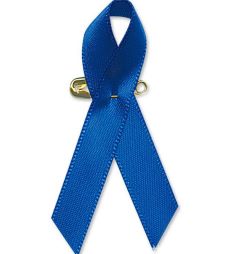Historical Child Abuse Claims
NetActuary provides a considerable number of economic loss reports to our legal clients for workers
compensation and motor vehicle accident matters. Increasingly, however, we are seeing a significant number of requests for the
quantification of economic loss in more esoteric area of impairment of earnings due to historical childhood abuse .

Since the 2015 Royal Commission into Institutional Responses to Child Sex Abuse all states in
Australia have introduced legislation to remove limitation periods for childhood sexual abuse claims: Victoria in 2015, NSW
and ACT in 2016, Tasmania and Northern Territory in 2017 and Queensland, South Australia and Western Australia in 2018.
Some states such as NSW and Victoria have also abolished the limitation period for childhood physical abuse. This abolishment
of the limitation period is the reason for the increase in the number of claims being raised about these matters.
NetActuary employs an in-house lawyer, Claire, with a corporate practicing certificate which allows
us to collaborate in areas such as historical sexual abuse claims that involve legal and actuarial overlap. Unlike area like
Family Law these Tort Law cases require knowledge of State legislative provisions. Case law provides guidance in many aspects
of the reports we generate for childhood sexual abuse compensation. For example, unlike for other personal injury and
negligence claims there is often no current legislative guidance on the discount rates to be applied to future losses for
childhood sexual abuse. Instead, the current common law position is a 3% discount rate (Todorovic v Waller [1981] HCA 72;
(1981) 150 CLR 402.)
As childhood sexual abuse claims often date back many decades there are added complexities to
quantifying the losses involved, especially in the calculation of past earnings. For example, where a plaintiff worked
in a number of semi-skilled casual positions for short periods over the course of their life Lawrence v Province Leader
of the Oceania Province of the Congregation of the Christian Brother [2020] WADC 27 provides guidance as to the
appropriateness of usinga rate of 50% of a semi-skilled or AWE related approach to calculate past earnings.
Reliance on actuarial factor tables does not accurately reflect the whole picture. Even just
quantifying past earning loss can be a challenge. NetActuary has a complete computational model including tax, offsets
and levies that go back to the 1970s which we use to come up with sound estimates of past economic earnings loss.
Our economic loss calculations can calculate pre-judgement interest. Current legislation in this
area gives the Court discretion as to the amount, interest rates and time period over which to apply interest and provides
that the Court may award pre-judgement interest retrospectively from the time the cause of action accrued. These provisions
allow the Court to do more complete justice between the parties considering the often-considerable time before proceedings
commence. However, given the current higher cash rate published by the Reserve Bank it will be interesting to see what
judgements might be handed out in this area to reflect the Court’s opinion of what is a fair pre-judgement interest rate.
NetActuary’s reports can calculate pre-judgement interest based on the statutory upper maximum and also show alternative
pre-judgement interest calculations.
Past gratuitous care can be a very significant item. There are currently statutory limits on
gratuitous care payments that apply under most state’s civil liability legislation (Wrongs Act 1958 (VIC), Civil Liability
Act 2002 [NSW] etc.) but the common law guides compensation for gratuitous care services in historical sexual abuse claims.
Generally, past gratuitous care damages are awarded on the basis of the market cost of those services unless those services
are unreasonable (Griffiths v Kerkemeyer [1977] 139 CLR 161; Van Gervan v Fenton [1992] HCA 54; Mercer v Allianz Australia
Insurance Ltd (No 2) [2013] TASSC 35; ZAB v ZWM [2021] TASSC 64). NetActuary provides calculations based on evidence-based
market values for gratuitous care services and can calculate care costs at both commercial costs and capped hourly rates.
Historical sexual abuse claims for compensation are an emerging issue in society and calculation of
the losses involves often entails discussion and a number of drafts about the individual approach required. Although the time
required on each report varies, NetActuary has decided to simplify our costs and to prepare these reports for a fixed fee of
$2200 inclusive of GST irrespective of how much time may need to be written off.
To discuss further please do not hesitate to contact Claire (claire@netactuary.com.au) or Brian
(brian@netactuary.com.au) or by phone on (03) 9028 5002.